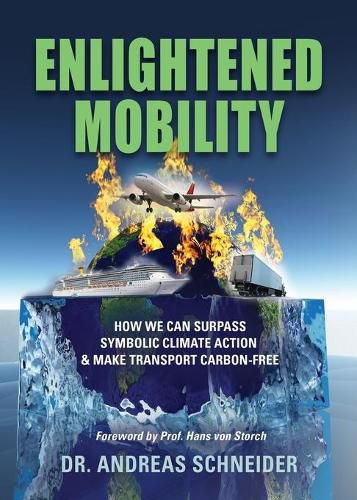Readings Newsletter
Become a Readings Member to make your shopping experience even easier.
Sign in or sign up for free!
You’re not far away from qualifying for FREE standard shipping within Australia
You’ve qualified for FREE standard shipping within Australia
The cart is loading…






This title is printed to order. This book may have been self-published. If so, we cannot guarantee the quality of the content. In the main most books will have gone through the editing process however some may not. We therefore suggest that you be aware of this before ordering this book. If in doubt check either the author or publisher’s details as we are unable to accept any returns unless they are faulty. Please contact us if you have any questions.
Foreword by renowned climate scientist Hans von Storch.
The man-made greenhouse effect has been validated by science. Transportation with its high carbon intensity is a major driver of the greenhouse effect. It makes up for one quarter of global carbon dioxide emissions. These emissions come burning fossil fuel for cars, trucks, ships, trains, and planes and they significantly contribute to global warming. This climate change will not only result in rising sea levels that will put coastal cities at risk but will also have severe ecological, physical and health impacts.
The public discussion on how to fight climate change mostly evolves around symbolic actions whose effect is rather doubtful. Will prohibiting domestic flights in France significantly reduce carbon emissions? How about introducing restrictive speed limits on roads? Should we keep flying at all?
Enlightened Mobility applies a fact-based, rational approach to outline the most beneficial strategies to combat climate change in the transportation sector. Based on the author’s experience from 15 years of consulting in mobility and transportation, it focuses on the major levers. These are Technology, Modal Shift, and Demand Management. The book explains why our current local and national thinking is doomed to fail and where resources need to be invested to have the maximum impact on emission reduction. At the same time, the author suggests a new mobility paradigm and paints a picture of the multimodal future of transportation. A provocative vision that challenges widespread thinking and common knowledge.
$9.00 standard shipping within Australia
FREE standard shipping within Australia for orders over $100.00
Express & International shipping calculated at checkout
This title is printed to order. This book may have been self-published. If so, we cannot guarantee the quality of the content. In the main most books will have gone through the editing process however some may not. We therefore suggest that you be aware of this before ordering this book. If in doubt check either the author or publisher’s details as we are unable to accept any returns unless they are faulty. Please contact us if you have any questions.
Foreword by renowned climate scientist Hans von Storch.
The man-made greenhouse effect has been validated by science. Transportation with its high carbon intensity is a major driver of the greenhouse effect. It makes up for one quarter of global carbon dioxide emissions. These emissions come burning fossil fuel for cars, trucks, ships, trains, and planes and they significantly contribute to global warming. This climate change will not only result in rising sea levels that will put coastal cities at risk but will also have severe ecological, physical and health impacts.
The public discussion on how to fight climate change mostly evolves around symbolic actions whose effect is rather doubtful. Will prohibiting domestic flights in France significantly reduce carbon emissions? How about introducing restrictive speed limits on roads? Should we keep flying at all?
Enlightened Mobility applies a fact-based, rational approach to outline the most beneficial strategies to combat climate change in the transportation sector. Based on the author’s experience from 15 years of consulting in mobility and transportation, it focuses on the major levers. These are Technology, Modal Shift, and Demand Management. The book explains why our current local and national thinking is doomed to fail and where resources need to be invested to have the maximum impact on emission reduction. At the same time, the author suggests a new mobility paradigm and paints a picture of the multimodal future of transportation. A provocative vision that challenges widespread thinking and common knowledge.